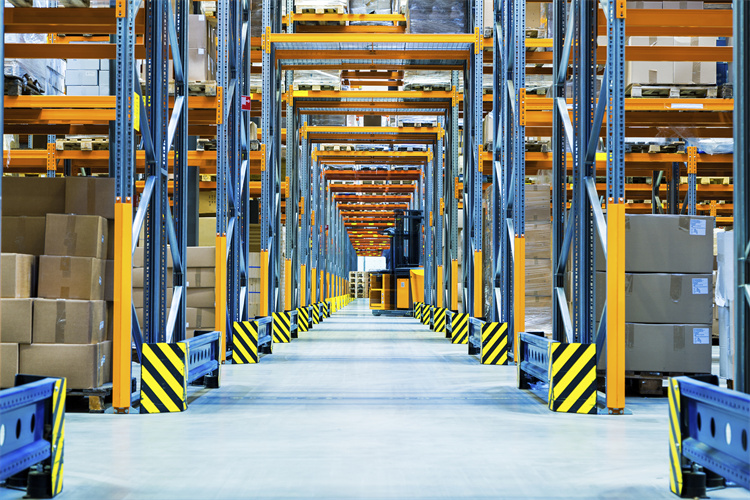Finding Cost-Effective Warehousing Solutions

Warehousing plays a crucial role in your business's supply chain management. It helps reduce transportation costs and enhances delivery speed. However, finding cost-effective solutions remains a challenge. Labor costs, especially in manual warehousing, account for over 55% of operational expenses. Additionally, storage fees and rent continue to rise, with Sydney experiencing a 25.4% increase in costs over the past year. Despite these challenges, innovative strategies can help you optimize your warehousing operations and improve efficiency.
Understanding Warehousing Costs
Fixed and Variable Costs
Understanding the costs associated with warehousing is crucial for managing your budget effectively. Warehousing costs can be divided into two main categories: fixed and variable.
Rent and Utilities
Fixed costs, such as rent and utilities, remain stable over time. When you lease or purchase a warehouse, these expenses become predictable. You know what to expect each month, which helps in planning your finances. Rent often constitutes a significant portion of your fixed costs, especially in high-demand areas. Utilities, including electricity and water, also fall under this category. These costs do not fluctuate with the level of warehouse activity, providing a stable financial baseline.
Labor Costs
Labor costs, on the other hand, can be both fixed and variable. In manual warehousing operations, labor costs tend to be high and increase annually. You pay for the workforce needed to manage inventory, process orders, and maintain the facility. However, if you opt for automated warehousing, you can reduce these costs over time. Automation offers scalability, allowing you to adjust labor needs based on demand, which can lead to long-term savings.
Hidden Costs
Beyond the obvious expenses, warehousing involves hidden costs that can impact your bottom line.
Maintenance and Repairs
Maintenance and repairs are essential for keeping your warehouse functional and safe. Regular upkeep prevents equipment breakdowns and ensures smooth operations. These costs can vary depending on the age and condition of your facility. Ignoring maintenance can lead to costly repairs and downtime, affecting your overall efficiency.
Inventory Shrinkage
Inventory shrinkage represents another hidden cost. It occurs when there is a discrepancy between recorded and actual inventory levels. Causes include theft, damage, or administrative errors. Shrinkage can lead to financial losses and disrupt your supply chain. Implementing robust inventory management practices helps minimize this risk and maintain accurate stock levels.
By understanding these costs, you can make informed decisions to optimize your warehousing operations. Identifying and managing both visible and hidden expenses will enhance your ability to find cost-effective solutions.
Strategies for Cost-Effective Warehousing

Space Optimization
Efficient use of space in your warehouse can significantly reduce costs. By optimizing the available area, you can store more products without expanding your facility.
Vertical Storage Solutions
Vertical storage solutions maximize the use of your warehouse's height. Instead of spreading inventory across a large floor area, you stack items vertically. This approach not only saves space but also reduces the need for additional square footage. Implementing vertical racks or shelving systems allows you to store more products in the same footprint, enhancing your warehousing efficiency.
Efficient Layout Design
An efficient layout design streamlines operations and minimizes unnecessary movement. Arrange your warehouse to facilitate easy access to frequently picked items. This reduces the time spent on retrieving products and improves overall productivity. Consider using software tools to simulate different layouts and identify the most effective design for your needs. A well-organized warehouse layout can lead to faster order processing and lower labor costs.
Technology Integration
Integrating technology into your warehousing operations can lead to substantial cost savings. Advanced systems enhance accuracy, reducing manual errors and labor expenses.
Warehouse Management Systems (WMS)
A Warehouse Management System (WMS) provides real-time visibility into your inventory levels and movements. It automates tasks such as order picking, packing, and shipping, reducing the reliance on manual labor. With a WMS, you can track inventory accurately, minimize errors, and optimize stock levels. This technology ensures that your warehousing operations run smoothly and efficiently.
Automation and Robotics
Automation and robotics transform traditional warehousing processes. Automated systems handle repetitive tasks like sorting and transporting goods, freeing up your workforce for more complex activities. Robotics can operate around the clock, increasing productivity and reducing labor costs. By investing in automation, you can achieve long-term savings and improve your competitive edge in the market.
Inventory Management
Effective inventory management is crucial for maintaining cost-effective warehousing. By aligning inventory levels with demand, you can minimize excess stock and reduce holding costs.
Just-In-Time Inventory
Just-In-Time (JIT) inventory management involves receiving goods only as they are needed for production or sales. This approach reduces the amount of inventory held in your warehouse, lowering storage costs. JIT requires precise demand forecasting and strong supplier relationships to ensure timely deliveries. By adopting JIT, you can enhance your warehousing efficiency and reduce waste.
Demand Forecasting
Accurate demand forecasting helps you anticipate customer needs and adjust inventory levels accordingly. Use historical data and market trends to predict future demand. This enables you to maintain optimal stock levels, avoiding overstocking or stockouts. Effective demand forecasting ensures that your warehousing operations align with market demands, reducing unnecessary costs.
Case Studies:
Italian Sports Company Warehouse Optimization: JUSDA's warehousing solutions provided advanced technologies to meet the company's demands, ensuring they remained competitive in the market.
High Ridge Brands' Cost Reduction: By integrating warehousing and transportation with ODW Logistics, High Ridge Brands achieved a 20% reduction in total supply chain costs. This highlights the effectiveness of integrated solutions in driving substantial savings.
By implementing these strategies, you can optimize your warehousing operations and achieve cost savings. Embrace technology, optimize space, and manage inventory effectively to enhance your business's efficiency and competitiveness.
Choosing the Right Warehousing Partner

Selecting the right warehousing partner is a pivotal decision for your business. It can significantly impact your supply chain efficiency and overall operational costs. Here are some key considerations to guide you in making an informed choice.
Evaluating Service Providers
When evaluating potential warehousing partners, you need to weigh several factors to ensure they align with your business needs.
Cost vs. Service Quality
Balancing cost and service quality is essential. A lower-cost provider might seem attractive, but you must consider the quality of service they offer. High-quality service ensures timely deliveries, accurate inventory management, and reliable customer support. Corporate Storage, a leader in 3PL warehousing, emphasizes the importance of this balance. They suggest that you assess the provider's track record, client testimonials, and service offerings to gauge their reliability and efficiency.
Location and Accessibility
The location of your warehousing partner plays a crucial role in your logistics strategy. A strategically located warehouse reduces transportation costs and delivery times. You should consider proximity to major transportation hubs, such as highways, ports, and airports. Accessibility to your target markets is also vital. A well-located warehouse can enhance your distribution network and improve customer satisfaction.
Contract Negotiations
Once you identify potential partners, the next step involves negotiating a contract that meets your business requirements.
Flexible Terms
Flexibility in contract terms can provide you with the agility to adapt to changing business needs. Look for warehousing partners who offer scalable solutions, allowing you to adjust storage space and services as your business grows. Flexible terms can also include options for short-term or long-term agreements, depending on your operational demands.
Performance Metrics
Establishing clear performance metrics in your contract ensures accountability and transparency. Define key performance indicators (KPIs) such as order accuracy, on-time delivery rates, and inventory accuracy. Regularly review these metrics with your warehousing partner to ensure they meet your expectations. Performance metrics help you maintain control over your supply chain operations and drive continuous improvement.
By carefully evaluating service providers and negotiating favorable contract terms, you can choose a warehousing partner that aligns with your business goals. This strategic decision will enhance your supply chain efficiency and contribute to your overall success.
JUSDA's Role in Cost-Effective Warehousing
JUSDA stands out as a leader in providing cost-effective warehousing solutions. By leveraging advanced technologies and strategic locations, JUSDA ensures that your business remains competitive in the ever-evolving market landscape.
JUSDA's Warehousing Solutions
Cloud Warehousing
JUSDA's Cloud Warehousing revolutionizes traditional storage methods by integrating cutting-edge technology. This system uses AI-driven solutions and robotics to enhance operational efficiency. Smart drones improve inventory tracking accuracy, while cloud-based architecture offers superior control and transparency. You benefit from automated warehousing and intelligent transfer via a big data platform, supporting multi-channel sales and ensuring seamless operations.
Consolidation and Distribution
Efficient consolidation and distribution are at the core of JUSDA's warehousing services. With strategically located warehouses across the US, including Bohemia on the East Coast and Rancho Cucamonga on the West Coast, JUSDA provides professional delivery solutions tailored to your needs. These facilities ensure timely delivery of goods, supporting diverse inventory types such as electronic components, household appliances, and high-value items. By optimizing inbound and outbound operations, JUSDA helps you reduce costs and improve service levels.
Industry-Specific Solutions
Electronic Manufacturing
In the electronic manufacturing sector, JUSDA offers specialized warehousing solutions that cater to the unique demands of this industry. The integration of advanced surveillance systems and restricted access protocols ensures the security of high-value electronics. JUSDA's temperature-controlled warehouses maintain precise conditions for sensitive components, reducing spoilage and ensuring compliance with industry standards. You gain peace of mind knowing your assets are secure and well-managed.
FMCG and Automotive
For the fast-moving consumer goods (FMCG) and automotive industries, JUSDA provides tailored solutions that enhance supply chain efficiency. The use of predictive analytics enables accurate demand forecasting, aligning supply with market trends. This approach reduces carrying costs and improves service levels. JUSDA's dynamic slotting optimization maximizes storage capacity, placing high-turnover items in easily accessible locations. You benefit from increased storage density and streamlined operations, ensuring your business stays ahead of the competition.
By choosing JUSDA, you access a comprehensive range of warehousing solutions designed to meet your specific business needs. Whether you operate in electronic manufacturing, FMCG, or automotive sectors, JUSDA's innovative approaches ensure cost-effective and efficient warehousing operations.

JUSDA Solutions
To provide you with professional solutions and quotations.
To achieve cost-effective warehousing, you should focus on several key strategies:
Space Optimization: Utilize vertical storage and efficient layout designs to maximize your warehouse capacity.
Technology Integration: Implement Warehouse Management Systems and automation to enhance accuracy and reduce labor costs.
Inventory Management: Adopt Just-In-Time inventory and demand forecasting to align stock levels with market needs.
By implementing these solutions, you can streamline operations and reduce costs. Explore these strategies further or consult with experts to tailor them to your business needs.
See Also
Boosting Warehouse Efficiency with Robotics in Logistics
Understanding Robotic Automation for Enhanced Warehouse Efficiency
Optimizing Supply Chain Costs: The Economic Perspective
Revealing JUSDA's Latest Warehousing Innovations for Efficiency
